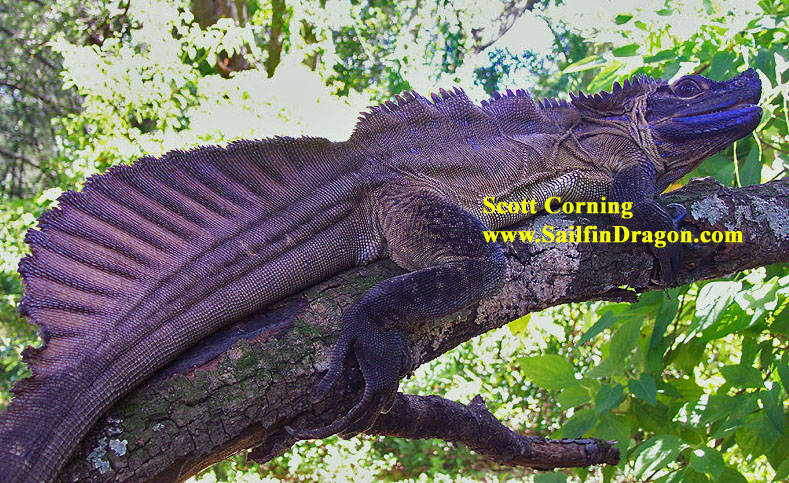 |
| Image from SailfinDragon.com |
This is the Philippine Sailfin Lizard (Hydrosaurus pustulatus). It lives up to its name well, with a tail that would not look out of place on a Dimetrodon1. As one can guess from the scientific name, the Sailfin is not out of place in the water, using the sail to power its swimming through the rivers of the Philippine Islands. In this case, swimming is mostly a defense mechanism to avoid terrestrial predators, though they have been known to eat crustaceans. This supplements their mostly herbivorous diet of fruits and leaves.
The fact that the males have a larger tail fin, along with their crayon-blue color, suggests another reason for the fin; the same reason Blue Iguanas are blue--it looks sexy. If a male has enough energy to produce a fin that large, and can still escape predators despite being the color of an interstate sign, that means he's got some good genes to pass down to the kids.
The Sailfin Lizard is no longer listed as Vulnerable on the IUCN list. This is not necessarily a good thing. It has been moved to Data Deficient, which means we don't really know how bad it is. Life on a tropical island means habitat loss is almost a given threat, but overshadowing that is the pet trade.
Ah, the pet trade, such a mixed curse. It destroys the wild population, without killing that many of them. If they can be bred in captivity, it means they might be able to be bred to be released. It also means that there can be a higher demand for them, leading to more being taken from the wild. It about killed the Red-Kneed Tarantula and Macaws2, but it might save the Axolotl. It looks like it could go either way for the Sailfin Lizard. This guy (where I got the picture) is selling captive-bred Sailfins as pets, and these guys are breeding them the same way to be released into the wild.
1Dimetrodon are actually more closely related to us than they are to this lizard.
2You do not want a Macaw as a pet. They might be pretty, but imagine having a five-year old child for seventy years. Whose screams can be easily heard for miles. Who can bite through an eighth of an inch of steel.
